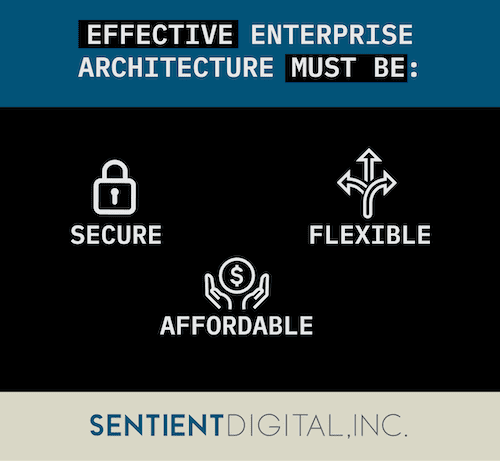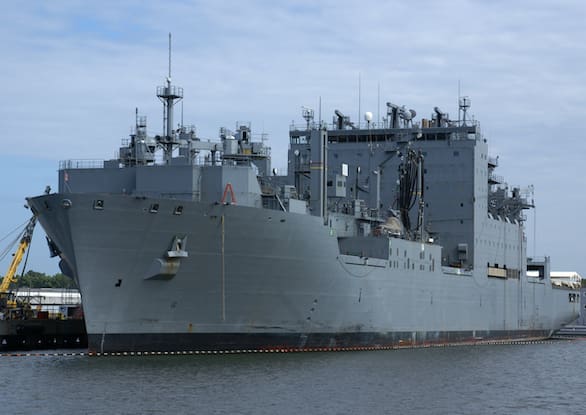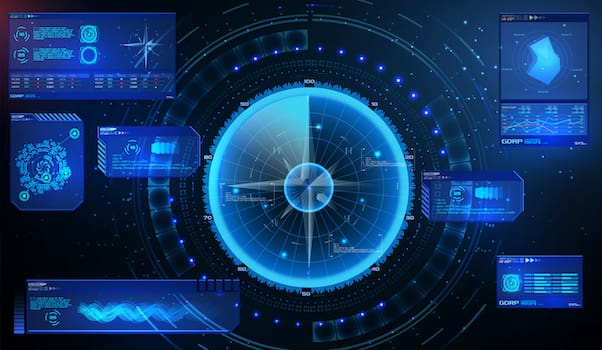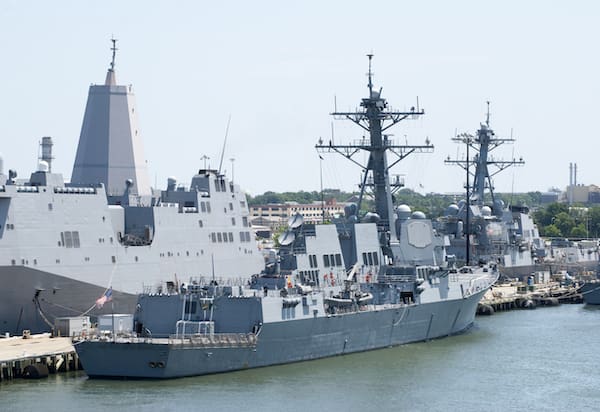Future state architecture refers to the development of a proactive technology roadmap designed to future-proof an organization’s IT infrastructure against the unforeseeable challenges which shifting commercial changes and technological developments will demand on enterprise architecture. It sets enterprise architecture accomplishments against a timeline that shows how enterprise architecture will be developed to push the organization toward IT transformation.
While evolution is a constant within the world of network IT and communications software, the exact nature of this change is unknowable. In order for it to be successful and serve the business, nonprofit, or government agency at hand, enterprise architecture must align with the organization’s contemporary and future requirements.
Rather than investing in technology for its own sake, future state architecture is about serving the business with a robustness and flexibility which will allow for long-term dynamism. Built into this model is the idea that future capabilities and requirements cannot be fully known, so the architecture must be flexible enough that applications and functionalities can be incorporated in the future.
As digital transformation initiatives pick up speed and next-gen technologies like artificial intelligence, 5G, and Internet of Things take hold, the future is becoming increasingly unpredictable. It has never been harder for enterprises to anticipate what will be required from their networks in the next few years, which is what makes effective future state architecture so critical today.
Defining Future State Architecture
When the decision is made to implement a new IT system, enterprise architects must avoid replicating the previous system. Often, this system has been patched together into a chaotic “hairball” of dated applications using painstakingly bespoke engineering solutions.
Although they cannot predict the future with 100% accuracy, enterprise architects can be confident that certain requirements will be placed on the system. The architect’s job is to create a system that can adapt to these requirements.

As well as robustness, a degree of flexibility has to be built into the new enterprise architecture. Not only does it need to be capable of meeting certain demands, outside of the current paradigm of information technology expectation, but also it must allow for innovation in the future.
If future users and engineers are unable to add future functionalities, the new enterprise architecture will quickly become beset with the same problems as the legacy system. This is a costly and inefficient cycle.
Future state architecture refers to the practice of pragmatically building open-ended and versatile functionalities, based on known business needs and future goals, into enterprise architecture. Future state architecture best practices help organizations to avoid creating a system that can become unable to maintain its purpose in the future.
Cost, Security, Flexibility: Three Competing Requirements
Because enterprise architecture is often brought in to replace an outdated and even chaotic system of incompatible applications, a lot of enterprise architecture is developed on the basis of correcting the problems of the previous system.
Three distinct requirements begin to emerge and may appear to be incompatible:
- The architecture must be secure.
- The architecture must be flexible.
- The architecture must be affordable.

An architecture which places a high emphasis on security can struggle to be suitably flexible and be developed at a low cost, for instance. Alternatively, a system which prioritizes flexibility may have increased ease of adoption for new functions and capabilities, but it struggles to keep pace with security needs. A focus on keeping the project within a restrictive budget may compromise both security and agility.
As a result, the various requirements expected from enterprise architecture must be balanced against one another, creating a strong, budget-appropriate, and agile system. For future state architecture, these competing requirements must be anticipated in the system’s functionalities for future growth as well.
Non-Commercial Applications
While technological breakthroughs are pushing the business ecosystem to become increasingly sophisticated and companies are required to change themselves to adapt to fresh challenges and realities, the non-commercial applications of future state architecture are diverse.
Every business has many parts, which may include:
- Processes
- Products and/or services
- Data
- People
- Technologies
These elements have to work together seamlessly in order to create value, leading the customer to buy whatever the company is selling and the company to be profitable.
It is worth noting that the term “enterprise” is not intended to indicate only for-profit endeavors, but rather organizations in general, to include:
- NGOs
- Government agencies
- Corporations
- Military branches
In spite of their differences, there is a lot of overlap between what each type of entity requires from their enterprise architecture.
Case Study: Sentient Digital’s Military Sealift Command Contract
In 2019, Sentient Digital, then operating as Entrust Government Solutions, was awarded a $49 million contract to provide information technology engineering support to the Military Sealift Command (MSC).
The MSC is the division of the U.S. Navy that controls military ocean transport ships and whose duties include replenishment of Navy ships as well as transporting cargo and supplies, among other critical missions. Sentient Digital was tasked with helping MSC to modernize command, control, communications, and computers (“C4”) systems.

Sentient Digital will also support the development of governance measures to ensure the MSC’s IT platforms align with its N6 division’s strategic business support plan, architecture frameworks, and technical standards established by the Department of Defense and Department of the Navy.
The contract requires Sentient Digital to conduct analysis and create an IT investment roadmap for development of MSC’s future state architecture, which as noted above is a critical supportive program providing auxiliary services to the U.S. Navy, including its warfighters.
Sentient Digital’s approach to future state architecture began with a comprehensive current state evaluation of MSC’s architecture, comprising:
- MSC current system capabilities review against joint capability areas
- MSC systems requirements review against N6 capabilities
- IT investment plans review
- Gap analysis of current and future capability sets
This is ultimately leading to identification of IT investment opportunities based upon gap analysis and the creation of a roadmap for future state enterprise architecture for the MSC’s N6 initiative.
Enterprise Architecture Objectives in the Military and Private Sectors
The most immediately significant difference between commercial IT infrastructure and its military counterpart is the primary objective of each.
While a military contract is an opportunity for streamlined cost efficiencies and economic benefits, ultimately the deliverable is enhanced security to the lives and wellbeing of the warfighters. When technology is supporting warfighters, the end user is often in a hostile and unfamiliar environment, with limited or zero pre-existing infrastructure. The warfighter may have:
- Surveillance equipment
- Local and long-range communications devices
- Scanning systems
- Radar

If the warfighter is at sea, for example, their vessel is likely to require the following systems:
- Communications (military, commercial, IP services)
- HR management
- Navigation systems
- Engineering systems
- Complex weapons systems
- Sophisticated resource and supply chain analytics
- Medical devices
The enterprise architecture must deliver a system which allows these diverse applications to be compatible. Failure will lead to a patchwork of inefficient systems and a greater demand on time, expertise, and resources dedicated to creating application flows. Ultimately it is the warfighter who would suffer, left with less than optimal communications, surveillance, and weapons systems.
Enterprise Architecture on Land and at Sea: Military and Civilian Applications
There is a substantial overlap between military requirements from enterprise architecture and more quotidian private sector requirements. Civilian resource extraction professionals working in the field have similar systems and devices to military personnel, for example. They also often work in sub-zero or tropical conditions or in marine environments.
The requirements for strong enterprise architecture are broadly similar. From extracting core samples to assessing the damage in the aftermath of a disaster, an organization with time-sensitive, high-stakes field-based operations needs to be confident that the data they capture can be sent to a different element of the organization in a form that can be processed.

This is true of:
- The disaster response industry
- Search and rescue teams
- Oil and gas exploration/extraction
- Law enforcement and firefighting
- Elements of construction and engineering
Furthermore, despite the assumed equivalence between military applications and “life or death” stakes while the private sector is expected to be more concerned with business figures, resource extraction and disaster response work are both industries with a serious and sustained threat to life.
Enterprise Architecture on Land and at Sea: Cultural Attitudes
Sentient Digital is a veteran-owned and operated company which provides technology solutions to federal, defense, and commercial clients using multiple delivery models. As a company with an agile mindset focused on meeting client objectives through cloud, cybersecurity, software development, and systems integration, Sentient Digital is experienced in government, military, and for-profit decision-making processes.
As technology advances, the challenges faced by contemporary business include:
- Competition from both disrupters and legacy companies
- International challenges
- Increased customer expectations
- Emergence of new business models
- Rapidly shifting regulatory landscape
Each of these threats represents an existential challenge to the contemporary business, which can only function so long as it successfully creates value for the customer. For Military Sealift Command specifically, and the military generally, a decline in operational power, organizational efficiency, and technological dominance could lead to a loss of military supremacy.
When it comes to future state architecture, the cultures within the contemporary business and within the military reflect an awareness of these critical threats.
Sentient Digital’s Work on the MSC Systems
Members of Sentient Digital’s team have undertaken the mapping of MSC’s current state enterprise architecture in comparison with the Department of Defense’s joint capabilities and functions lists. Looking at current state enterprise architecture enables us to undertake analysis geared towards assessing MSC’s ability to complete their missions in contested environments. Potential capability solutions can be either process changes or material changes.
Various N6 personnel have also been consulted in the architecture review sessions, providing the opportunity for input to and awareness of imminent developments to MSC architecture. Ultimately, the objective is the construction and implementation of an IT investment roadmap which will lead to the transformation required to meet future capabilities.

Supporting the warfighter in high-stakes situations is the reason for the project, as the main objective of MSC, and our use of future state architecture best practices will facilitate this goal. A robust and flexible future state enterprise architecture will allow the Department of Defense to remain equipped to deliver on its portfolio. With a comprehensive overhaul, MSC will be able to continue its work supporting warfighters regardless of future developments.
Get in Touch Today About Future State Enterprise Architecture
While many of the systems, processes, and technologies which Sentient Digital provides to MSC and other government agencies are proprietary and classified, parties interested in careers with SDi or becoming a client are encouraged to reach out to us to learn more.
Sentient Digital is proud to be veteran-owned and operated, and we look forward to helping more government and commercial clients with their enterprise architecture.




